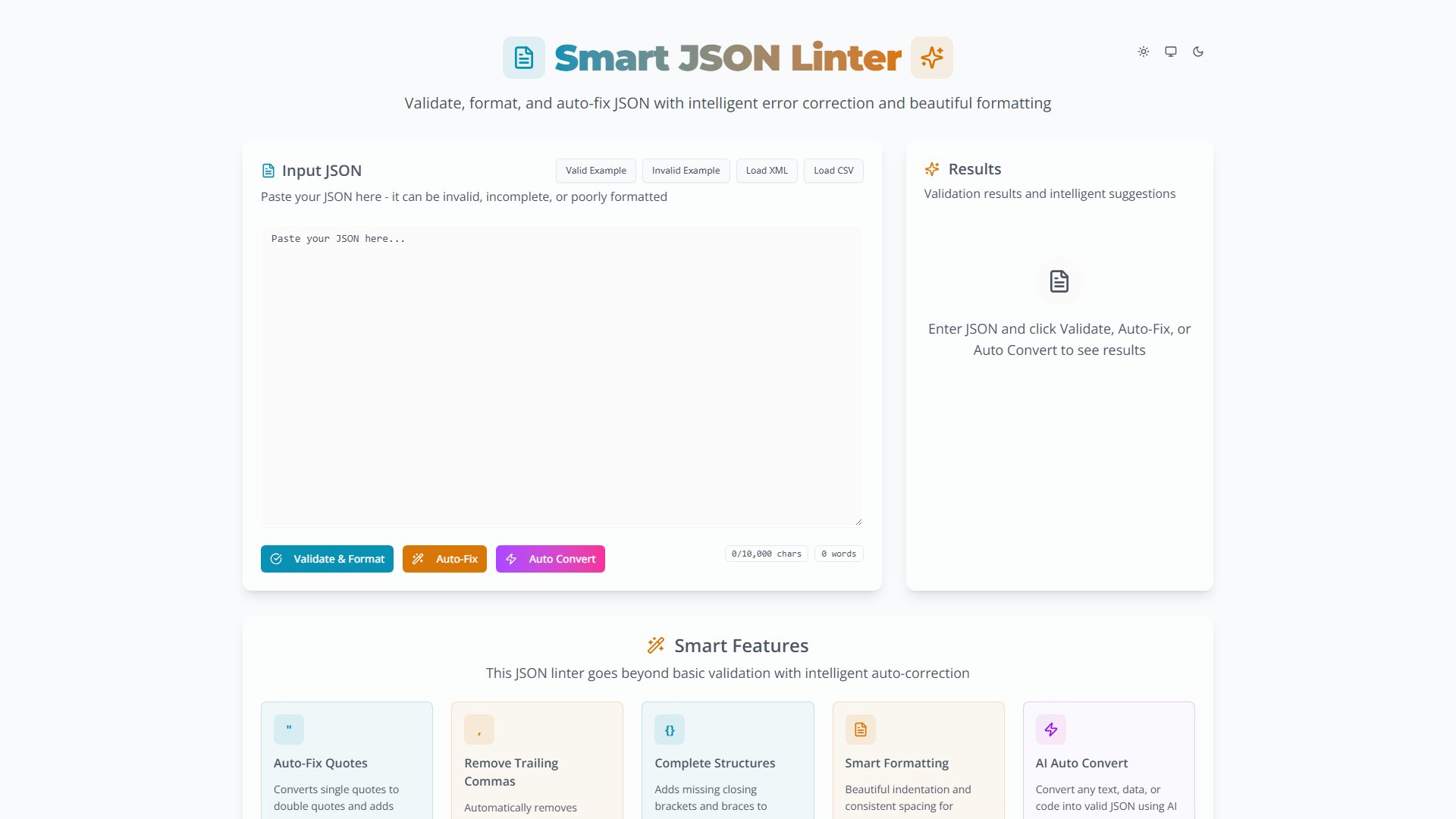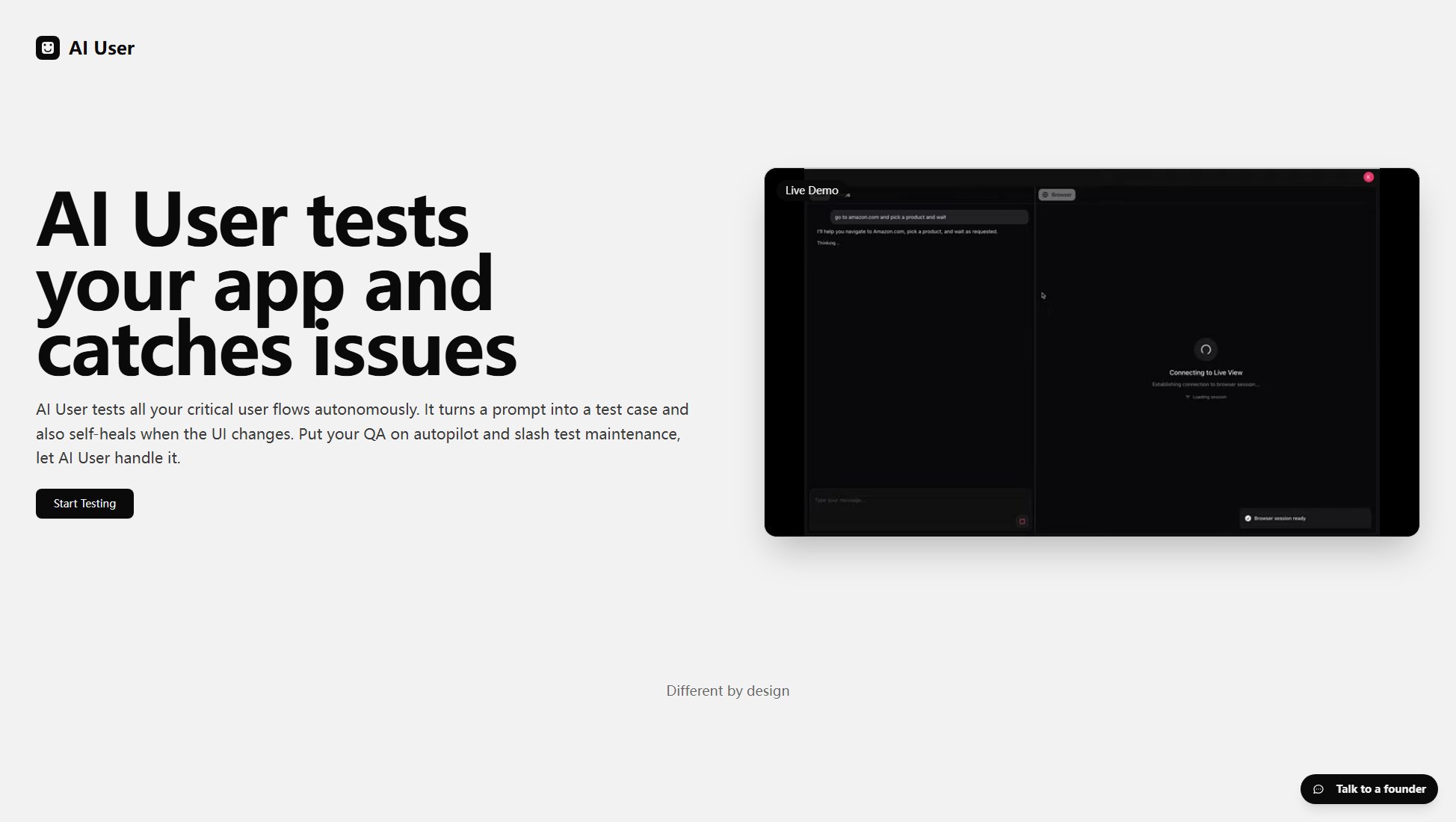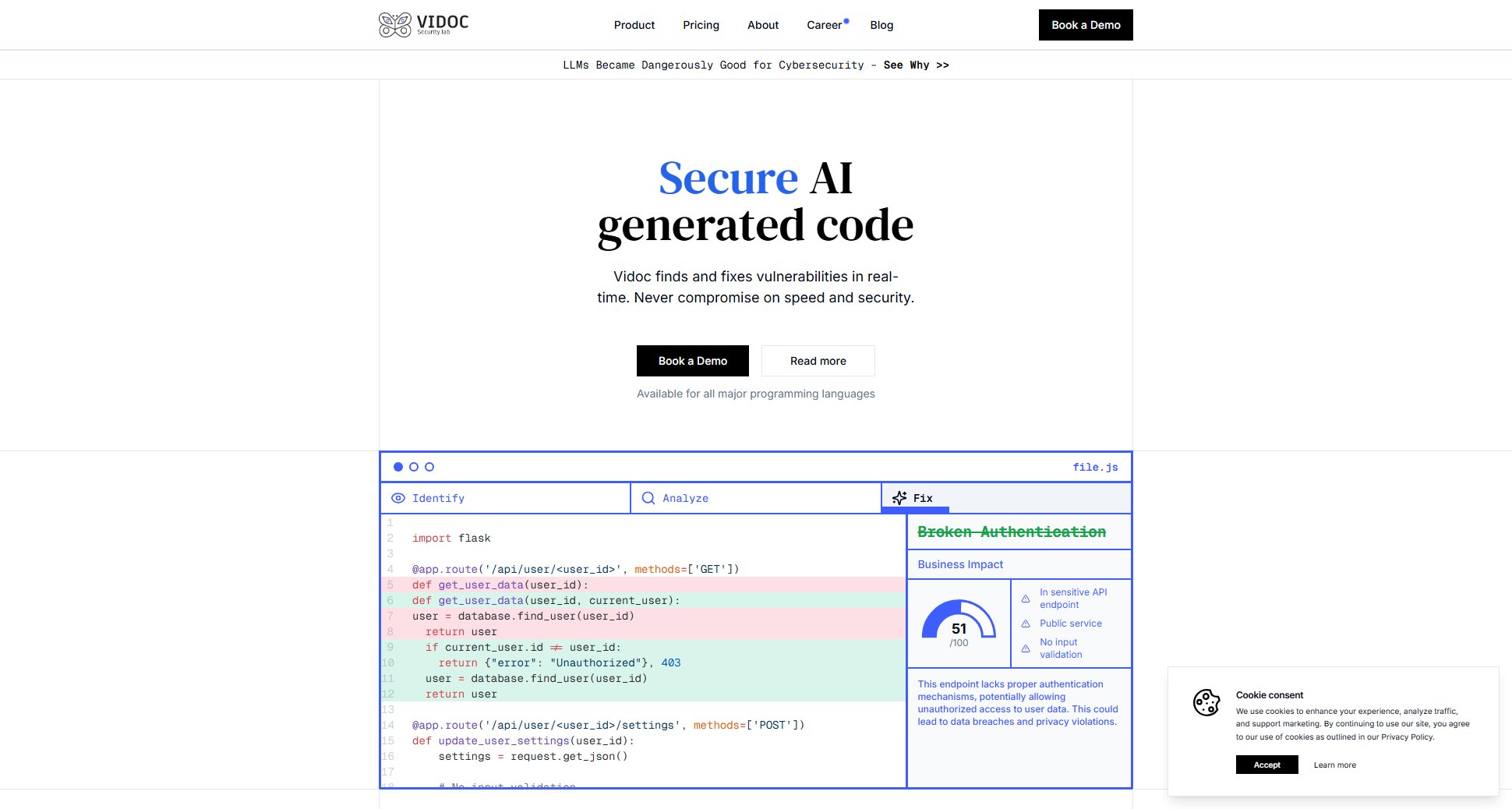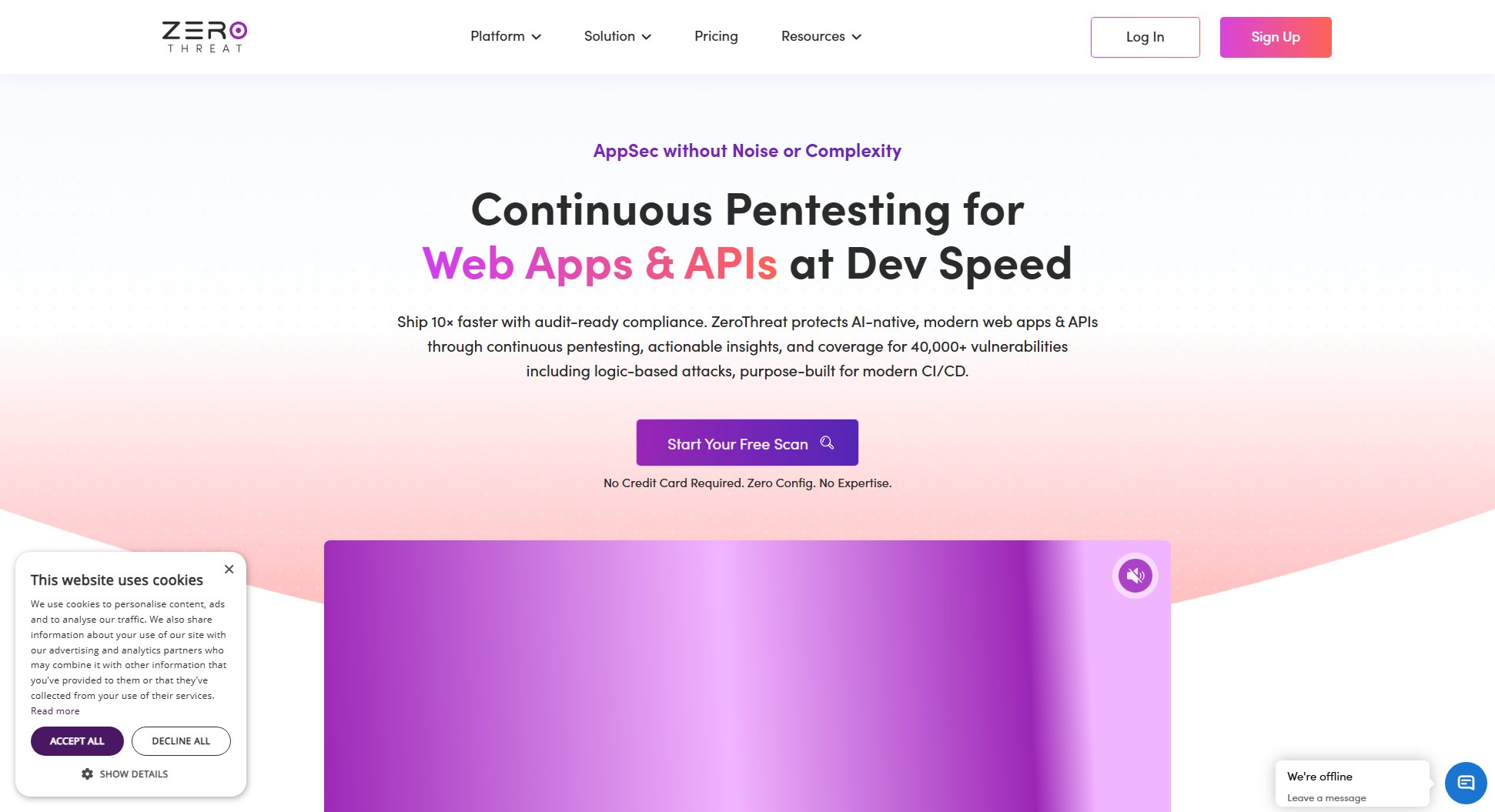Macroscope
AI-powered code review & bug detection for engineering teams
What is Macroscope? Complete Overview
Macroscope is an AI-powered platform that helps engineering teams understand their codebase, summarize development activity, and catch bugs before they reach production. It provides leaders with visibility into engineering progress while saving developers time by automating code reviews, commit summaries, and project tracking. The tool integrates with GitHub, Slack, Jira/Linear to provide contextual insights across the development workflow. Trusted by companies like Ephemera, Particle, and Behance, Macroscope uses advanced AST analysis and knowledge graphs to deliver high-signal insights with minimal noise.
Macroscope Interface & Screenshots
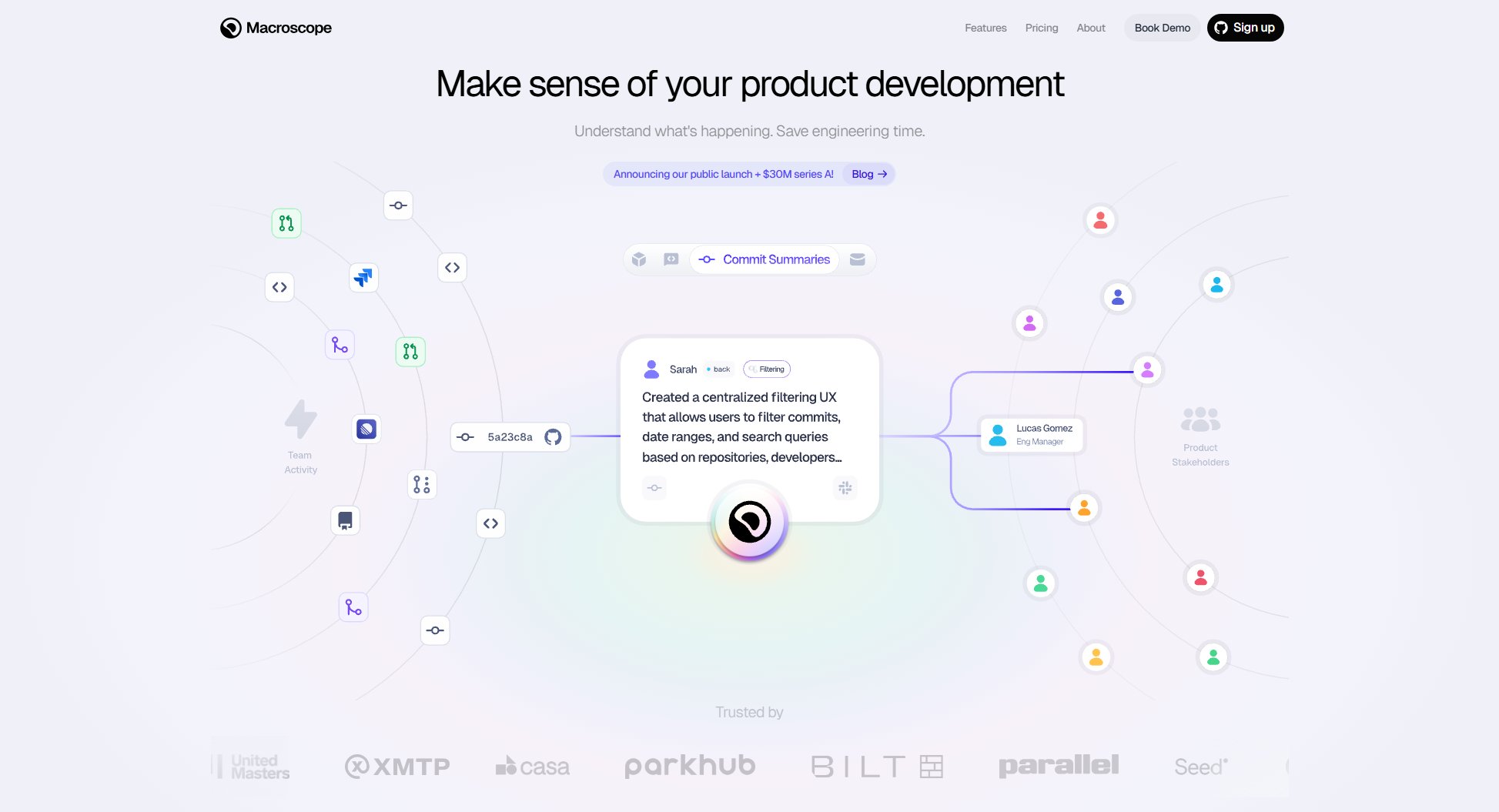
Macroscope Official screenshot of the tool interface
What Can Macroscope Do? Key Features
Automated Code Review
Macroscope analyzes pull requests using multiple LLM models in concert, identifying potential bugs and suggesting fixes before code reaches production. The system achieves high accuracy by combining OpenAI's models with Anthropic's Opus for consensus verification, reducing false positives.
Commit & PR Summaries
Automatically generates detailed, accurate descriptions of commits and pull requests that are often better than human-written summaries. The tool understands code changes in context of the entire codebase and development workflow.
Engineering Productivity Insights
Provides leaders with visibility into how engineering time is allocated, what got done each week, and project progress. Tracks metrics like coding time allocation, shipped features, and contributor activity.
Codebase Q&A
Allows team members to ask natural language questions about the codebase in Slack and receive answers grounded in the actual code, git history, and project context. Can explain technical decisions and architecture.
Project Tracking
Automatically identifies and tracks projects across the codebase, providing summaries of recent changes and helping teams stay aligned on progress without manual status updates.
Best Macroscope Use Cases & Applications
Accelerating Code Reviews
Engineering teams use Macroscope to automatically review pull requests, catching bugs before they reach production while providing detailed descriptions that help human reviewers understand changes faster.
Engineering Leadership Visibility
CTOs and engineering managers rely on Macroscope's productivity insights and project summaries to understand team progress without requiring status meetings or manual reports.
New Team Member Onboarding
New engineers use Macroscope's Q&A feature to quickly understand codebase architecture and technical decisions, reducing ramp-up time.
Technical Documentation
Teams leverage Macroscope's deep code understanding to automatically generate and maintain documentation that stays in sync with the actual implementation.
How to Use Macroscope: Step-by-Step Guide
Connect your GitHub account - Installation takes less than 10 seconds through the GitHub app. Macroscope immediately begins analyzing commits and pull requests.
Optional: Connect Jira/Linear (10 seconds) - This enriches Macroscope's understanding of work context and priorities, though it works well without these integrations too.
Connect Slack (30 seconds) - Enable the Slack integration to ask questions about your codebase and receive automatic updates about project changes.
Review automated PR summaries - Macroscope will start providing detailed descriptions of pull requests and flagging potential issues during code review.
Ask questions - Use Slack to query your codebase about technical decisions, architecture, or specific implementations.
Macroscope Pros and Cons: Honest Review
Pros
Considerations
Is Macroscope Worth It? FAQ & Reviews
Macroscope is SOC 2 Type II compliant, encrypts all customer data at rest and in transit, and maintains architectural isolation of customer code. Their agreements with model providers ensure your source code is not used for training.
The 2-week free trial includes all Teams plan features, allowing you to evaluate Macroscope's full capabilities before committing.
Macroscope stands out through its AST-based knowledge graphs that provide deeper code understanding, resulting in higher signal-to-noise ratio in bug detection and more accurate summaries compared to other tools.
Core integrations include GitHub, Slack, and optionally Jira/Linear. The tool is designed to work with your existing workflow without requiring process changes.
Most teams report seeing value within 24 hours of installation, with engineers often commenting on the accuracy of summaries and bug detection immediately.

